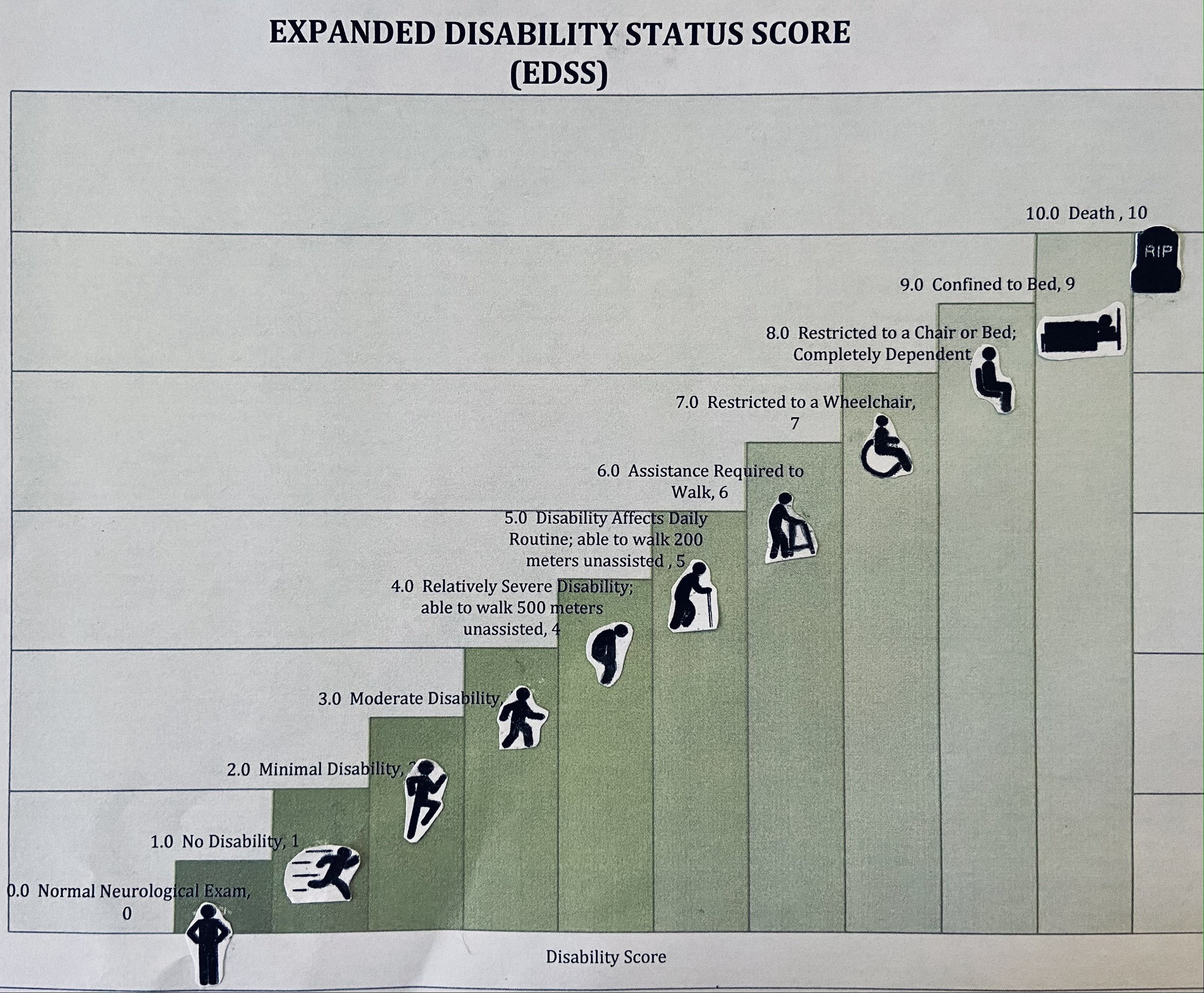
HSCT-MS Treatment
The day I left for Puebla, Mexico
Results
So, inquiring minds want to know, how am I doing one-year post-transplant? Pretty Amazing! The first year is indeed full of ups and downs, and the first time I felt a former symptom return, I immediately freaked out, but then my body settled back in, and the symptoms ceased. The roller coaster effect is the reason for waiting a whole year to know your new baseline. Fortunately, my body still has many gains and changes that came from resetting my immune system. Not to sound dramatic, but HSCT feels nothing short of a miracle. My disability score went from a 4.5 (moderate to severe range) to a 2.5 (minimal disability).
My Expanded disability score
My disability score changed considerably from diagnosis in 2016 to treatment in 2020 and much quicker than I'd anticipated. I had two conflicting views; one neurologist said my MS was still reasonably mild while the other classified it as aggressive. My scans also showed a black hole next to the left ventricle in the brain, which indicates my Multiple Sclerosis had been active longer than 10 yrs even though I had only received diagnoses 3 yrs prior. Nevertheless, I always felt my symptoms were manageable and tried to be grateful it wasn't much worse.
I first felt genuine fear when I started falling without notice. It was hard enough not knowing what I'd be capable of each day but even more disheartening when I could collapse for no reason. Dr. Meador assured me my body would settle in, which it did, and the falling was almost a thing of the past but what followed felt worse.
I could no longer stand to cook, so I sat on my Alinker. My brain became too disorganized to fill out paperwork for my kids at the doctor. If it weren't for meal kits, I wouldn't have been able to cook for my family anymore because I couldn't remember how to cook, nor could I follow a simple recipe. Thirty-minute prep time for meals quickly turned into an hour(s) long prep time. My driving also became uncoordinated, so it was at that point I felt it was too risky driving with my children and stopped driving at night altogether. At times my eyes hurt so bad I thought for sure I had optic neuritis, but there was only a slight vision change. I was also no longer able to walk far, and I had so much exhaustion that my life became barely functional. We moved our bedroom downstairs because I couldn't safely climb without the risk of falling, nor could I make it to the top without sitting because of my fatigue.
My parents lived next door, and there were days it was just too much work to walk to their house. I was alive, but I wasn't living. Fear of the future and knowing total disability probably wasn't far away made me feel a sense of urgency to move forward as soon as possible with HSCT. I was more than happy to accept the potential risks because I had become a shell of a person and dreaded what waited ahead. Life was hard, so I felt like what do I have to lose.
4.5 before HSCT to 2.5 after HSCT
I am a natural redhead with very thick straight hair. After losing my hair, it returned much lighter, very coarse, and curly. I no longer recognized myself when looking in the mirror. I eventually decided to dye my hair close to its original color to feel more like myself. Here's a compilation of the regrowth process. Your hair holds chemo for a while, so I began cutting my chemo curls little by little. Finally, my hair is a familiar color, texture, and is primarily straight again. Embrace the journey. Patience is key.
One year of hair before, during, and after treatment.


